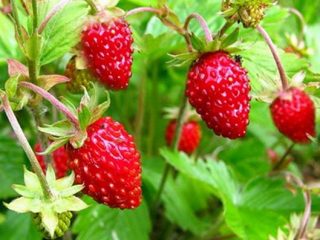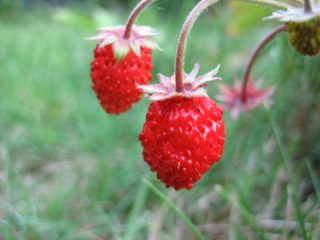Late strawberries delight the gardener with delicious berries until the end of summer. Breeders have developed many such varieties. A worthy representative of the late-ripening group is the Tago strawberry,
which we will now look at.
Characteristics of the variety
Review of Tago strawberries, description of the variety, photos, reviews, let's start with the main characteristics. According to the ripening period of berries, strawberries are considered medium-late or even late. The bushes grow compact. The foliage is large with a light green leaf blade. The mature bush is dense. Strawberries of the Tago variety winter well, which emphasizes their dignity.
The berries begin to ripen in early July. A distinctive characteristic of Tago garden strawberries is the different shape of the fruits of the first and subsequent tiers of the harvest. The first strawberry resembles a tree bud. The shape of strawberries from subsequent tiers of the harvest is closer to a cone with a truncated top. The pulp becomes bright red when ripe. When the fruit is fully ripe, the skin darkens. The berries are large, dense, and can be transported for a long time. According to its intended purpose, the Tago strawberry variety is recommended for making jam and compote.
Tago strawberries have no special requirements for the location and composition of the soil. However, gardeners noticed the fact that in sunny areas the berries grow larger and sweeter.It is optimal to place the garden bed in an open area. The best soil for Tago strawberries is considered to be black soil with peat additives. It is advisable to mulch the soil in the garden with straw. In addition to preserving moisture, mulch protects the berries from contamination. Subject to the conditions of agricultural technology, the Tago strawberry variety is rarely affected by fungal diseases.
The video provides an overview of garden strawberry varieties:
Strawberry planting time
Continuing the review of Tago strawberries, description of the variety, photos, reviews, it’s time to talk about planting the crop. Gardeners claim that strawberries can be planted in the garden at any time during the growing season. However, the best dates are traditionally considered to be early spring, as well as the end of August - mid-September.
Autumn planting of strawberries is beneficial in the southern regions. From the end of August to the beginning of winter, a strawberry seedling of the Tago variety will have time to take root. For cold regions with long winters, spring planting is preferable.
Strawberries grow on any soil, but do not tolerate swampy and sandy areas. Loose, slightly acidic soil with good breathability is optimal. If water stagnates in the area, the strawberry roots will begin to rot. The maximum occurrence of groundwater is allowed at a depth of 70 cm.
For spring planting of the Tago strawberry variety, the site is prepared in the fall. The soil is dug up to a depth of 30 cm. Weed rhizomes are removed from the soil, while adding organic matter. At 1 m2 the beds are scattered with about half a bucket of manure, peat, humus or compost.In the spring, just before planting strawberry seedlings of the Tago variety, an additional similar amount of wood ash, 40 g of superphosphate and 20 g of potassium are added.
Tago garden strawberries are planted in rows at a distance of 30 cm from each other. The row spacing is made up to 70 cm wide so that the mustache has room for engraftment. Holes are punched with a hoe to a depth of 25 cm and a diameter of up to 20 cm. The seedling is carefully sprinkled with loose soil so as not to damage the root system and tamped lightly by hand. About 0.5 liters of warm water is poured into the hole.
When filling the root system of strawberries, it is important not to bury the heart. The seedling is immersed in the soil up to the root collar. If you dig deeper, the roots will rot. A fine sprinkling of soil threatens to quickly dry out the strawberry root system under the sun.
After planting the Tago strawberry seedlings, the row spacing is loosened with a hoe. As the soil dries, the plantings are watered. Until complete engraftment, the bushes are shaded during the day from the scorching rays of the sun.
If autumn is chosen for planting Tago strawberry seedlings, then the bed is prepared in three weeks. Organic and mineral fertilizers are applied simultaneously while digging the soil. The process of planting seedlings is no different from the actions carried out in the spring. However, the soil should be covered with straw so that early frosts do not prevent the strawberries from taking root.
Rules of care
Considering the Tago garden strawberry, description of the variety, photos, reviews, it is worthwhile to dwell in detail on the rules of cultivation. Care involves regular watering, fertilizing, weeding weed. In the fall, the foliage is trimmed and the strawberries are prepared for wintering.
In spring, the root system of bushes may be exposed due to being washed out by melt water or being pushed out of the ground by frost. After the soil has thawed, hilling begins immediately. Strawberry roots sprinkled with soil are lightly trampled with your foot. The gaps between the bushes and the aisles are loosened with a hoe. In the future, weeding is carried out every time weeds appear.
Mulching helps simplify the care of Tago strawberry plantings. Peat, fine straw, and sawdust give good results. Mulch prevents the formation of crust on the ground after each watering and reduces the growth of weeds. After 4-5 years, they look for a new plot for Tago strawberries, since the crop does not grow in one place for a long time.
Flowering of strawberries of the Tago variety begins about a month after the start of the growing season. One inflorescence usually grows on the heart. From 5 to 27 flowers can form in the shield. The flowering period lasts 4–6 days. In general, the entire bed of strawberries can bloom for up to three weeks, but it all depends on weather conditions and the quality of care. During flowering, strawberries should not be treated with pest control agents.
Watering strawberries of the Tago variety is carried out regularly as the soil dries. Typically, during drought, the procedure is carried out once every three days. Strawberries love sprinkling, but during flowering it is advisable to water at the root. This can be done using a drip system or dig a 12 cm deep groove in the center of the row spacing and run water through it from a hose. In the second case, after the liquid has been absorbed, the furrows are covered with soil to retain moisture.
At the root of a small plantation, Tago strawberries can be watered from a watering can, having first removed the divider. It is good to take water from a storage tank, where it warms up to air temperature. Experienced gardeners have learned how to attach a magnet to a water tap. Water passed through such a device has a positive effect on increasing the yield, as well as the size of the fruit.
You can determine the need for watering by looking at soil moisture. Holes 30 cm deep are dug in different places in the garden bed. If the soil taken from the bottom of the hole crumbles when kneaded with your hand, then the strawberries need to be watered. In cloudy weather and cool summers, the intervals between waterings are increased to 7 days. However, when pouring berries, Tago strawberries are watered maximum every 5 days.
Berries greatly drain all the strength from the plant. To replenish nutrients, regularly fertilize strawberries. Organics are the most popular among gardeners. Use wood ash, dry compost or liquid solutions of fermented bird droppings. During ovary, strawberries need minerals.
In the spring, immediately after the snow melts, the first fertilizing is performed. You can sprinkle saltpeter over the garden bed, but it is better to add a liquid solution of complex fertilizer to each strawberry bush. 2 liters are poured under a young plant, and up to 5 liters of liquid fertilizer are poured under an adult plant.
When color appears, a second feeding is required. Mullein is dissolved in water in a ratio of 6:1 or bird droppings - 20:1. After fermenting the solution, add 0.5 cups of ash to 10 liters of liquid. The feeding rate for each bush is from 2 to 5 liters.
The third feeding with mullein is done during rapid flowering, only 1 part of manure is diluted with 8 parts of water.At the end of fruiting in the third ten days of August, Tago Strawberries are watered with a superphosphate solution, dissolving 50 g of dry matter per 10 liters of water. Fertilizing is needed to restore strength to the plant, and also helps to lay fruit buds for the next season.
Strawberries of the Tago variety are transplanted to another place after 4–5 years. The process involves carrying out similar actions taken when planting seedlings for the first time. Three methods are used for propagation: seeds, mustaches and dividing the bush.
Reviews
Reviews from gardeners will help you learn more about the Tago strawberry variety.















The collection should be based on resistant varieties. Dark green shiny leaves are usually a sign of the variety's resistance to a number of diseases. Such foliage is less affected by mites, spotting and powdery mildew.On strong peduncles located at the foliage level or higher, berries are less affected by gray rot. Pay attention to these signs when reading descriptions or choosing strawberry seedlings at the garden center.